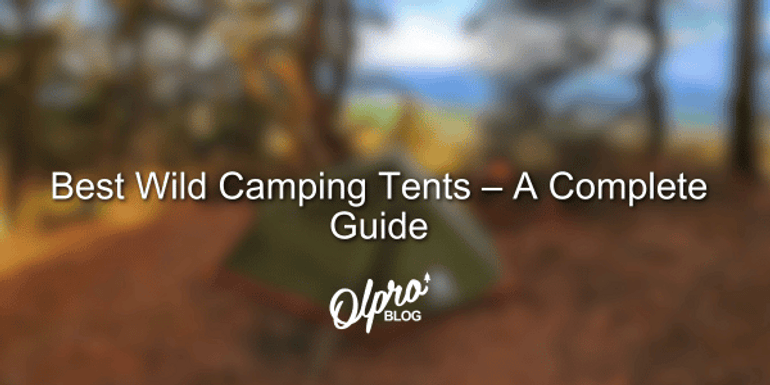Best Wild Camping Tents – A Complete Guide
Wild camping is one of the most exhilarating ways to explore the great outdoors, offering a true sense of freedom and adventure. Whether you're setting up camp in the mountains, by a secluded lake, or deep in the forest, having the right gear is essential. Choosing from the best wild camping tents ensures you stay safe, dry, and comfortable, no matter the conditions.
In this guide, we’ll explore the best tents for wild camping, covering lightweight and durable options, budget-friendly choices, and the best 2-man tents for wild camping. We’ll also provide a wild camping checklist to help you prepare for your next adventure.
What to Look for in the Best Wild Camping Tents
When selecting the best wild camping tent, there are a few key factors to consider:
1. Lightweight & Compact Design
Wild camping often involves hiking to remote locations, so your tent needs to be light enough to carry without weighing you down.
- The OLPRO Solo Tent weighs just 1.8kg, making it one of the best budget wild camping tents for solo adventurers.
2. Weather Resistance
The unpredictable UK weather means your tent must withstand rain, wind, and even snow. A high hydrostatic head rating ensures waterproof protection.
- The OLPRO Beckford 2 Berth Tent has a 5000mm waterproof rating, ideal for all-season camping.
3. Quick & Easy Setup
A fast-pitching tent is crucial when setting up camp in poor weather or fading daylight. Look for simple pole structures or inflatable designs.
- The OLPRO Stafford 2.0 Tent is designed for quick pitching, making it one of the best tents for wild camping.
4. Discreet & Durable
For stealth camping, opt for a tent in natural colours that blends into the environment while offering durability.
- The OLPRO Hawford 2-Person Tent is a fantastic option, featuring a strong frame and a discreet design.
Best Wild Camping Tents UK – Top Picks
Best 1-Person Wild Camping Tent
For solo adventurers, a lightweight tent is essential:
OLPRO Solo Tent
✔ Ultra-lightweight at 1.8kg
✔ 5000mm waterproof rating
✔ Small pack size for easy transport
Best 2-Man Tents for Wild Camping
For those who want extra space or camp in pairs, these are the best 2-man tents for wild camping:
OLPRO Beckford Lightweight 2-Berth Tent
✔ Ripstop fabric for added durability
✔ Lightweight yet spacious design
✔ Ideal for UK wild camping conditions
OLPRO Stafford 2.0 Tent
✔ Quick setup for convenience
✔ Lightweight and compact
✔ High waterproof protection
Best Budget Tents for Wild Camping
If you're looking for the best budget wild camping tents, these options offer durability at an affordable price:
OLPRO Hawford 2-Person Tent
✔ Strong yet affordable
✔ Great for beginners or occasional campers
✔ Compact pack size
Wild Camping Checklist – Essential Gear for Your Trip
Before heading out, make sure you have everything you need for a successful trip. Use this wild camping checklist to prepare:
Shelter & Sleeping Gear
✔ Lightweight tent – Choose from the best wild camping tents above
✔ Sleeping bag – A season-appropriate sleeping bag for warmth
✔ Sleeping mat – Provides insulation and comfort
Cooking & Food
✔ Portable stove – Essential for making hot meals
✔ Lightweight cookware – Compact pots and utensils
✔ Water filtration – A must for safe drinking water
Clothing & Accessories
✔ Waterproof jacket – Protects against sudden downpours
✔ Thermal layers – Essential for warmth at night
✔ Sturdy hiking boots – Crucial for rough terrain
Navigation & Safety
✔ Map & compass – Always carry a backup navigation system
✔ First aid kit – Essential for treating minor injuries
✔ Headtorch – Helps with visibility at night
Why OLPRO Offers the Best Wild Camping Tents UK
OLPRO specialises in high-quality wild camping tents, designed for UK weather and adventure seekers. Whether you need a lightweight solo tent, a spacious 2-man tent, or the best budget wild camping tents, OLPRO has the perfect option.
Shop the Best Wild Camping Tents Today
Explore our full range of wild camping tents and gear up for your next adventure.


 Euro
Euro
 Swedish Krona
Swedish Krona
 Danish Krone
Danish Krone
 Norwegian Krone
Norwegian Krone
